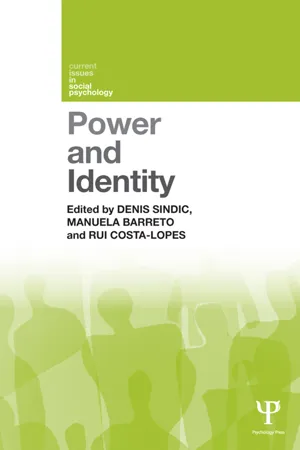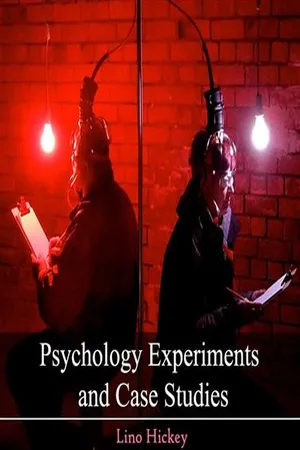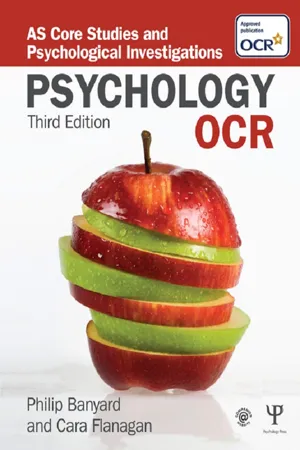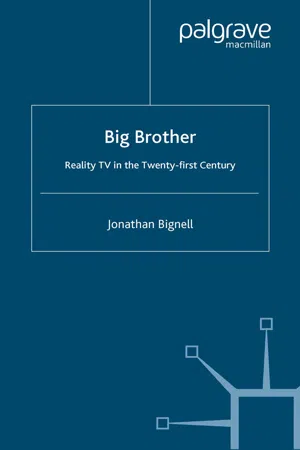Psychology
BBC Prison Study
The BBC Prison Study was a social psychology experiment conducted in 2002, inspired by the Stanford Prison Experiment. It aimed to investigate the psychological effects of perceived power and authority in a simulated prison environment. The study highlighted the potential for individuals to conform to social roles and the ethical considerations of conducting research in such settings.
Written by Perlego with AI-assistance
Related key terms
1 of 5
6 Key excerpts on "BBC Prison Study"
- eBook - ePub
- Denis Sindic, Manuela Barreto, Rui Costa-Lopes(Authors)
- 2014(Publication Date)
- Psychology Press(Publisher)
There is a range of research to support both the general contention that shared social identity in a group provides the power to effect social change (e.g. Drury & Reicher, 1999, 2009) as well as the specific hypotheses of social identity theory concerning the roles of permeability, legitimacy and cognitive alternatives in shaping group strategies (e.g. see Ellemers, 1993; Ellemers, van Knippenberg, De Vries & Wilke, 1988; Ellemers, van Knippenberg & Wilke, 1990; Ellemers, Wilke & van Knippenberg, 1993). However, for all its conceptual clarity, tight design and consistent results, this work lacks the scope, scale and drama of Zimbardo’s study. The studies might provide theoretical tools to make sense of struggles between groups, but they don’t in themselves embody that struggle. In large part this is because in the laboratory—unlike in Zimbardo’s prison—the blood, sweat, and tears are missing. Furthermore, because it lacks this immediacy and intensity, the work also fails to grab (and constrain) our imaginations in quite the same way as the SPE.Any attempt to develop our understanding of domination and resistance cannot therefore ignore Zimbardo’s work; rather, it must be confronted head on. This was what we sought to do through the BBC Prison Study. In short, we wanted to create an environment in which we could interrogate intergroup struggles through a social identity lens.So, in its conception, our study was intended and designed to marry together the heroic scale of the classic field studies with the conceptual precision of contemporary social psychology (and of the social identity tradition in particular). We set our focus wide enough to pick up signs of conformity and resistance, and, as we have already intimated, at various stages of the study we introduced a series of theoretically informed interventions designed to impact on the balance between conformity and resistance. Then we used the various data sources outlined above in order to examine the antecedents of group identification and also its consequences for both intra- and inter-group processes. Full details of both the study design and the study findings can be found elsewhere (Haslam & Reicher, 2002; Reicher & Haslam, 2006a). For now, we will simply outline the elements that are necessary to frame a discussion of the interrelationship between identity, power and powerlessness.A narrative of the BBC Prison Study Set upWe ran the BBC Prison Study as we would any other study: we were responsible for designing it, operationalising it, taking it through normal University ethical procedures, running it, analysing it, and defining the story to be told from it. For this, the BBC had to cede a measure of editorial control, with their role being focused on building the prison set, filming the study, managing the very complex logistics, and assembling the material so as to tell our story in the most compelling way. This was a difficult and controversial decision for them. Critically, though, it distinguished our project from ‘reality TV’ where academics are invited in to comment on an entertainment devised by television producers. It made our project unique then and, we believe, still now. In essence, this was an experiment televised, not a confection with an academic veneer. - No longer available |Learn more
- (Author)
- 2014(Publication Date)
- The English Press(Publisher)
Similar studies BBC Prison Study Alex Haslam and Steve Reicher, psychologists from the University of Exeter and University of St Andrews, conducted the BBC Prison Study in 2002. This was a partial replication of the SPE conducted with the assistance of the BBC, who broadcast events in the study in a documentary series called The Experiment. Their results and conclusions differed from Zimbardo's and led to a number of publications on tyranny, stress and leadership. Moreover, unlike results from the SPE, these were published in leading academic journals such as British Journal of Social Psychology, Journal of Applied Psychology, and Social Psychology Quarterly. The BBC Prison Study is now taught as a core study on the UK A-level Psychology OCR syllabus. While Haslam and Reicher's procedure was not a direct replication of Zimbardo's, their study does cast further doubt on the generality of his conclusions. Specifically, it questions the notion that people slip mindlessly into role and the idea that the dynamics of evil are in any way banal. Their research also points to the importance of leadership in the emergence of tyranny of the form displayed by Zimbardo when briefing guards in the Stanford experiment. ________________________ WORLD TECHNOLOGIES ________________________ Experiments in the USA The Third Wave was a 1967 recreation of Nazi Party dynamics by high school teacher Ron Jones in Palo Alto, California. Although the veracity of Jones' accounts has been questioned by some, several participants in the study have gone on record to confirm the events. In April 2007, it was reported that high school students in Waxahachie, Texas, who were participating in a role-playing exercise fell into a similar abusive pattern of behavior as exhibited in the original Stanford experiment. In multimedia • In 1992, Quiet Rage: The Stanford Prison Experiment, a documentary about the experiment, was made available via the Stanford Prison Experiment website. - eBook - ePub
OCR Psychology
AS Core Studies and Psychological Investigations
- Philip Banyard, Cara Flanagan(Authors)
- 2013(Publication Date)
- Psychology Press(Publisher)
Loftus and Palmer study).Things you could do …Read the original article by Reicher and Haslam at http://www.bbcprisonstudy.org/pdfs/BJSP(2006)Tyrannny.pdf .Read: Haslam and Reicher (2002). A user’s guide to ‘The Experiment’: Exploring the psychology of groups and power. London: BBC Learning.Watch a video and gets lots of other information at the official site for The Experiment, see http://www.bbcprisonstudy.org .Evaluating the study by Reicher and HaslamThere are no simple answers.Evaluating a study requires you to think.We have provided some pointers here, linked to the RESEARCH METHODS and KEY ISSUES covered in Chapter 1 (Psychological investigations) and Chapter 7 (Key issues).You can read suggested answers on our website www.psypress.com/cw/banyard.The research method This study was conducted in a controlled laboratory environment.What are the strengths and weaknesses of using a controlled environment in the context of this study?The study was described as an experiment and a case study.Describe the strengths and weaknesses of using these research method in the context of this study.The sample The participants were British males and volunteers.In what way are the participants in this sample unique? How might this affect the conclusions drawn from the study?Ethics Do you think this study was ethically acceptable? Outline reasons for and against.Reliability Reliability concerns measurement.What aspects of human behaviour were measured in this study? How could the reliability of these measurements be assessed? - eBook - PDF
Big Brother
Reality TV in the Twenty-First Century
- J. Bignell(Author)
- 2005(Publication Date)
- Palgrave Macmillan(Publisher)
As if in a psychological test, the selfishness of desiring the first 118 Big Brother: Reality TV in the Twenty-first Century series’ prize of £70,000 conflicted with the contestants’ need to gain loyalty from their housemates. Psychologists were on hand to analyze the motivations and feelings of the contestants, establishing them as subjects of a scientific experiment, which the viewing audience was privileged to see, and which required expert commentary to properly understand. However, the prominence of this scientific and psychologi- cal discourse waned significantly as each series of Big Brother followed its predecessor. Even so, by 2004 and the deliberate pressurization of the housemates by ‘Big Brother evil’, the motif of the test or experiment conducted on volunteers remained in a modified form. In May 2002, BBC2 screened The Experiment, in which 15 men volunteered to take part in a televised version of an experiment conducted by Philip Zimbardo in 1971 at Stanford University. In the original 1971 version, volunteers were divided into two groups comprising prisoners and guards. This degener- ated into a tyrranical regime where the guards arbitrarily exercised their authority and the experiment was brought to an early end. The BBC programme included commentary by Alex Haslam and Steve Reicher, two academic psychologists, and participants were able to talk to a clin- ical psychologist about their problems and the programme was overseen by an ethics committee. The Experiment distanced itself from Big Brother by being trailed as a social investigation, but clearly the decision to make it in the first place must have been affected by the public attention to Big Brother in the media and among television producers and commission- ers. - eBook - PDF
Prison Cultures
Performance, Resistance, Desire
- Aylwyn Walsh(Author)
- 2019(Publication Date)
- Intellect Books(Publisher)
As a result, the researchers reported that there was much greater docility and compliance by the ‘prisoners’ (1973: 6). For the research team, the experiment highlighted the ‘dehumanizing tendency Prison Cultures 64 to respond to other people according to socially determined labels and often arbitrarily assigned roles’ (1973: 8). The wider implications of the research questioned to what extent ‘we’ allow ourselves to become imprisoned by docilely accepting the roles others assign ‘us’, or, indeed, choose to remain prisoners because being passive and dependent frees us from the need to act and be responsible for our own actions (1973: 9). 16 In their analysis of the experiment, Haney et al. refer to the ‘pathological reactions’ (1973: 75) of both ‘prisoners’ and ‘officers’. The experiment was terminated after six days rather than continue for a second week, as had been planned, because of the ‘intense’ affective responses from both subject groups (Haney et al. 1973: 88). Indeed, one of the striking reflections from the researchers is the fact that due to having recruited a fairly homogenous group of young men (all Caucasian and of similar age), several defining features of imprisonment did not surface as indicative behaviours in the simulated prison (such as rape – what they call ‘involuntary homosexuality’, racism, physical beatings, etc.). Rather, the power differential of role allocation caused the ‘officers’ to seek alternative ‘differences’ to justify arbitrary punishments. In other words, rather than remaining de-individualized, the mechanism of control and domination becomes more marked as it focuses on specificities. Subsequent critical explorations of the Stanford Prison Experiment have criticized its approach, and the researchers have been implicated in the psychological harm caused by the effects of domination and control. - eBook - PDF
- Saul Kassin, Steven Fein, Hazel Markus, , Saul Kassin, Steven Fein, Hazel Markus(Authors)
- 2020(Publication Date)
- Cengage Learning EMEA(Publisher)
j 12-4b The Prison Experience It is no secret that the prison population in the United States has grown over the years, a problem often referred to as “mass incarceration” (National Academy of Sciences, 2014; Simon, 2014). It is also no secret that many prisons are over- crowded and that the situation has worsened as a result of toughened sentencing guidelines. It is also no secret that prison life can be cruel, violent, and degrad- ing. The setting is highly oppressive and regimented, many prison guards are abusive, and many inmates fall into a state of despair (Paulus, 1988). Many are psychologically disturbed and in need of treatment they do not receive (Kupers, 1999); many are socially isolated in solitary confinement for long stretches of time, a practice that can have devastating psychological effects (Haney, 2018). Clearly, neither prisoners nor their guards are representative of the population as a whole. Still, it is natural for social psychologists to wonder, is there something about the prison situation that leads them to behave as they do? Would the rest of us react in the same way? For ethical reasons, one obviously cannot place research participants inside a real prison. So, many years ago, a team of researchers from Stanford University did the next best thing: They constructed a simulated prison in the basement of the psychology department building (Haney & Zimbardo, 1998; Haney et al., 1973; Zimbardo et al., 1973). Complete with iron-barred cells, a solitary-confinement closet, and a recreation area for guards, the facility housed 21 participants—all healthy and stable men between the ages of 17 and 30 who had answered a newspaper ad promising $15 a day for a 2-week study of prison life. By the flip of a coin, half the participants were designated as guards and the other half became prisoners. Neither group was told specifically how to fulfill its role.
Index pages curate the most relevant extracts from our library of academic textbooks. They’ve been created using an in-house natural language model (NLM), each adding context and meaning to key research topics.





